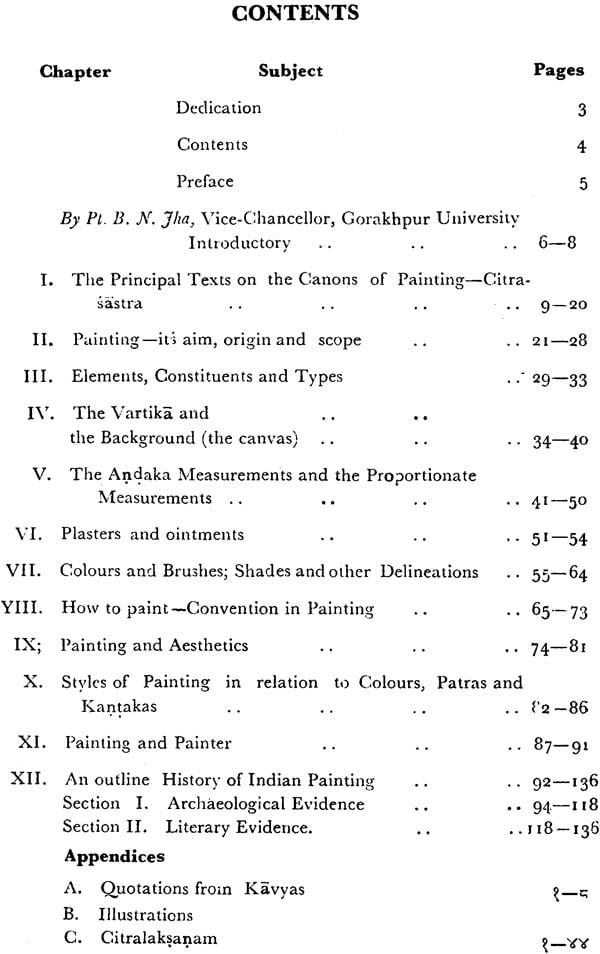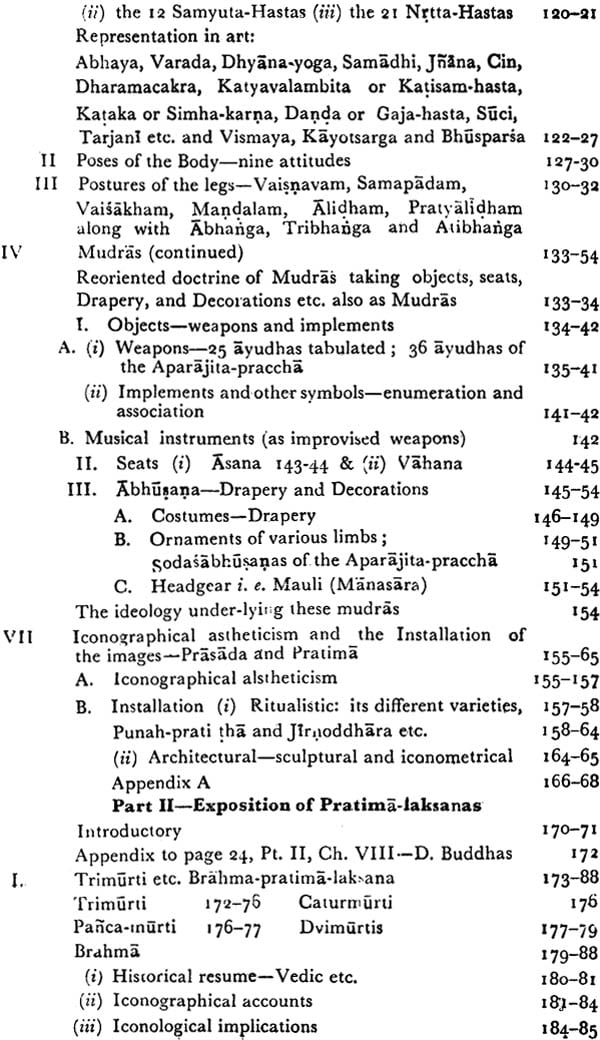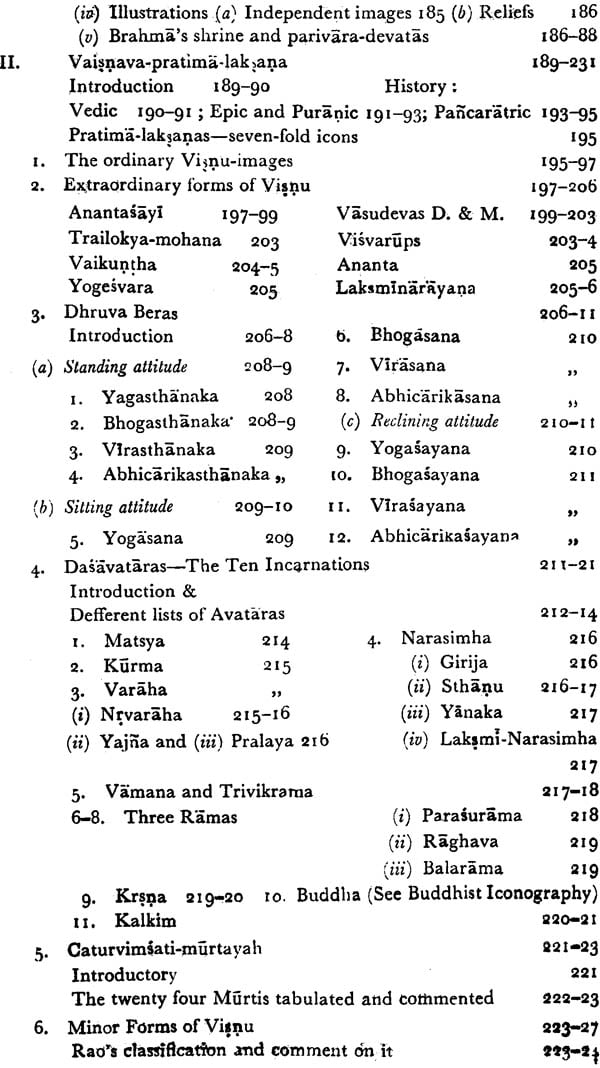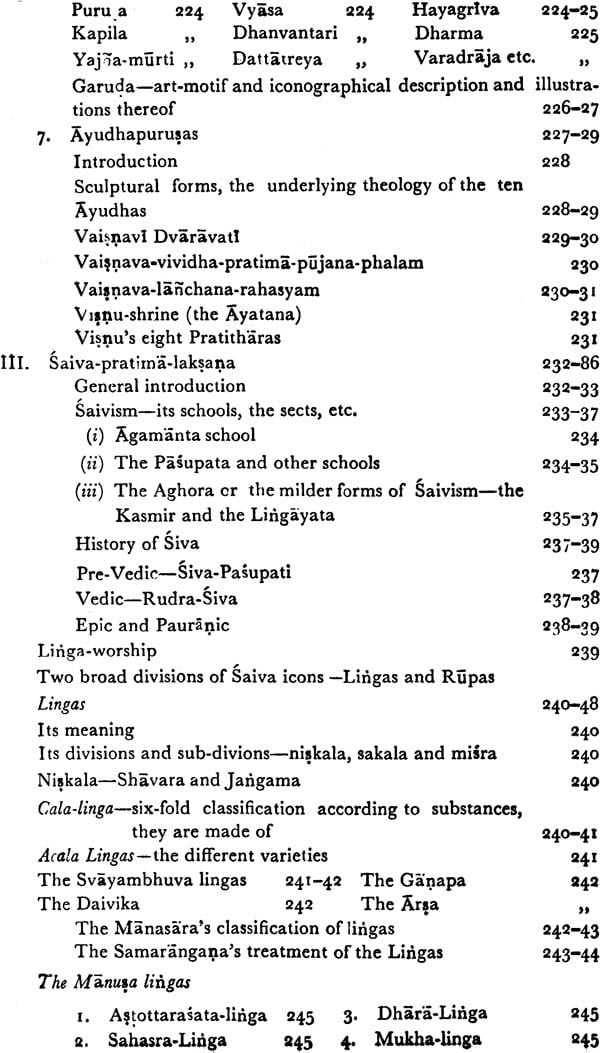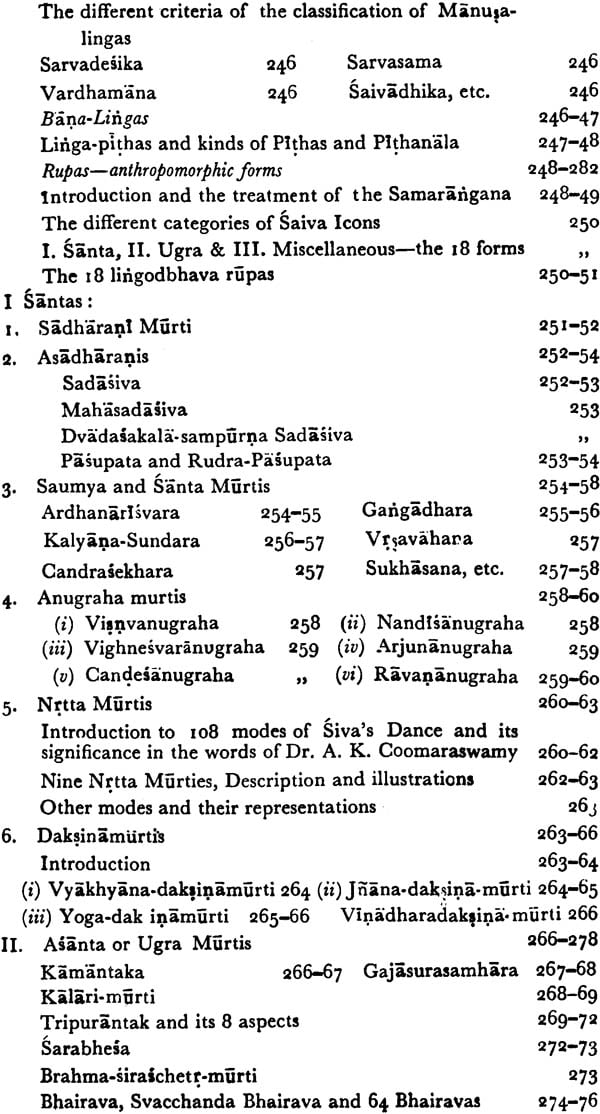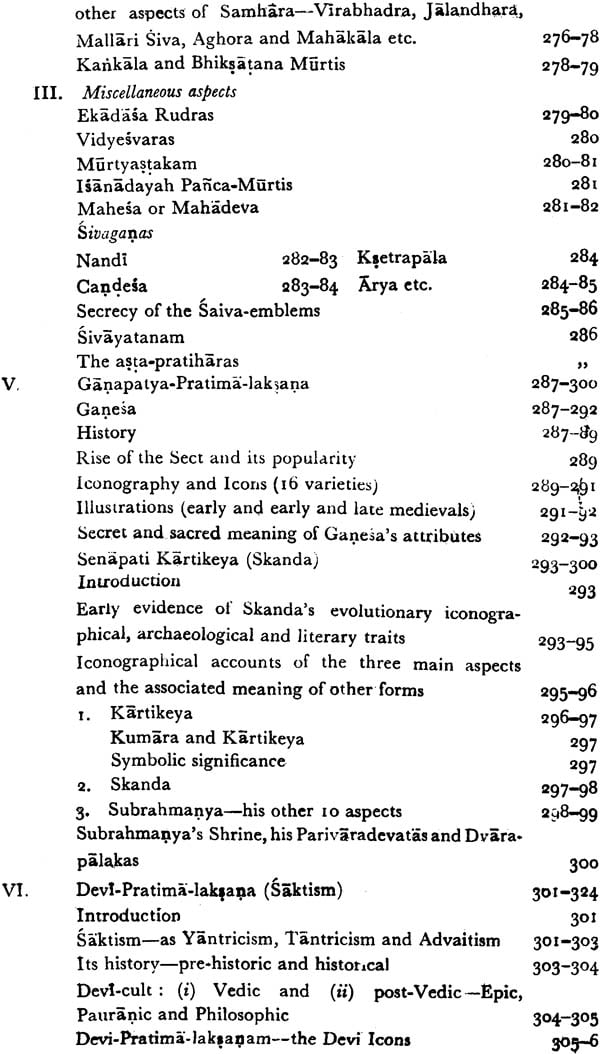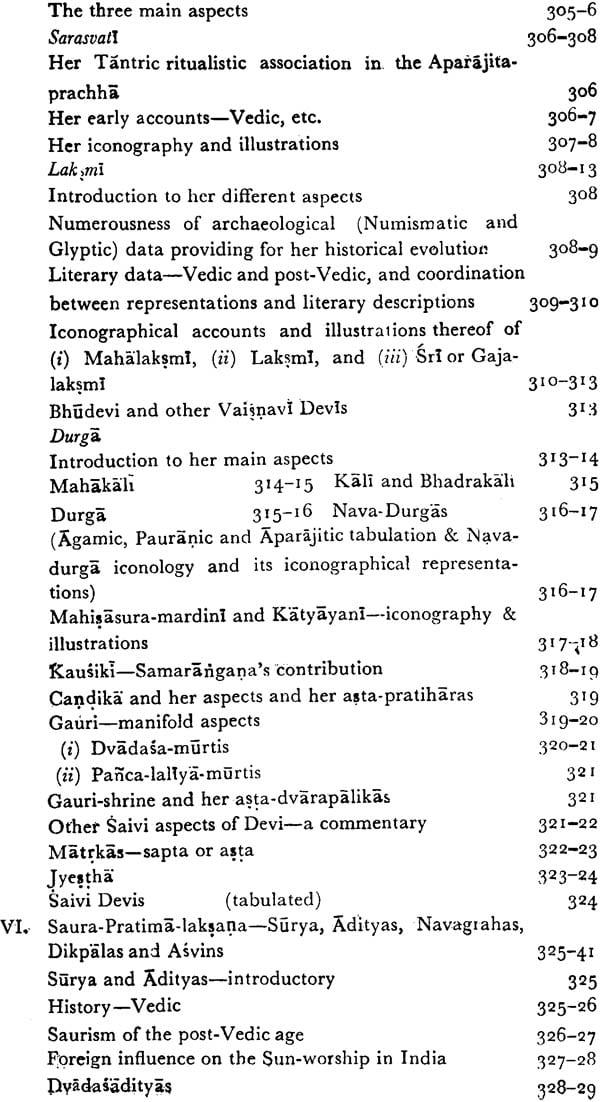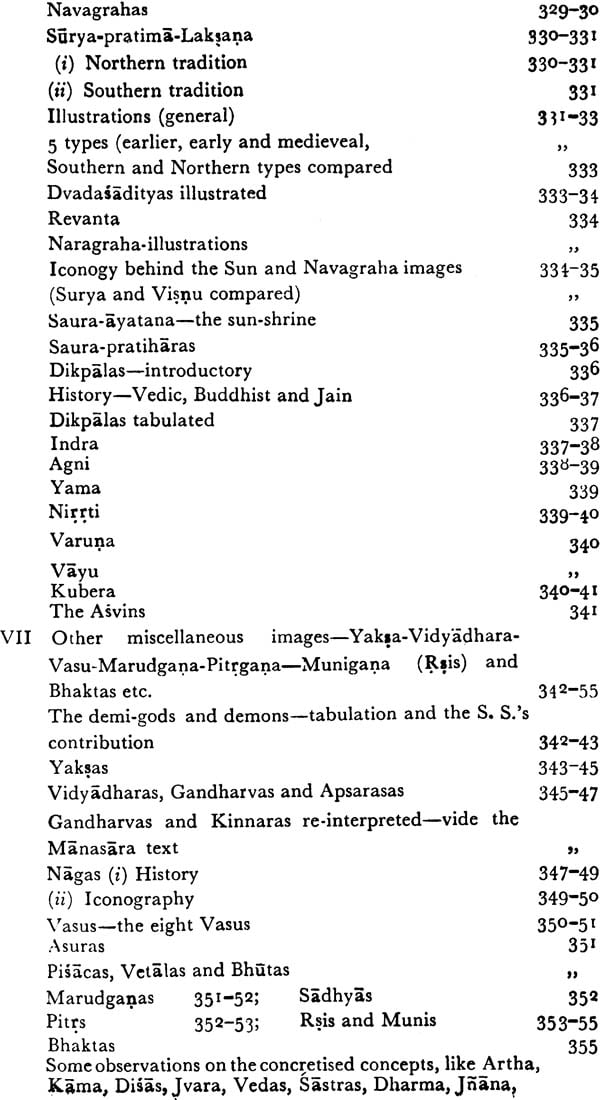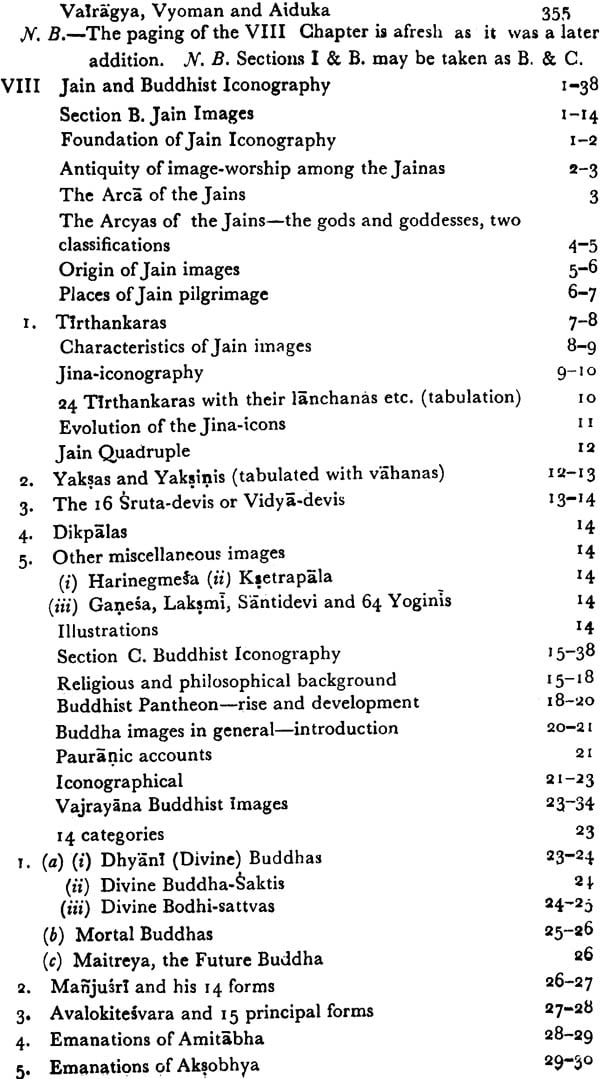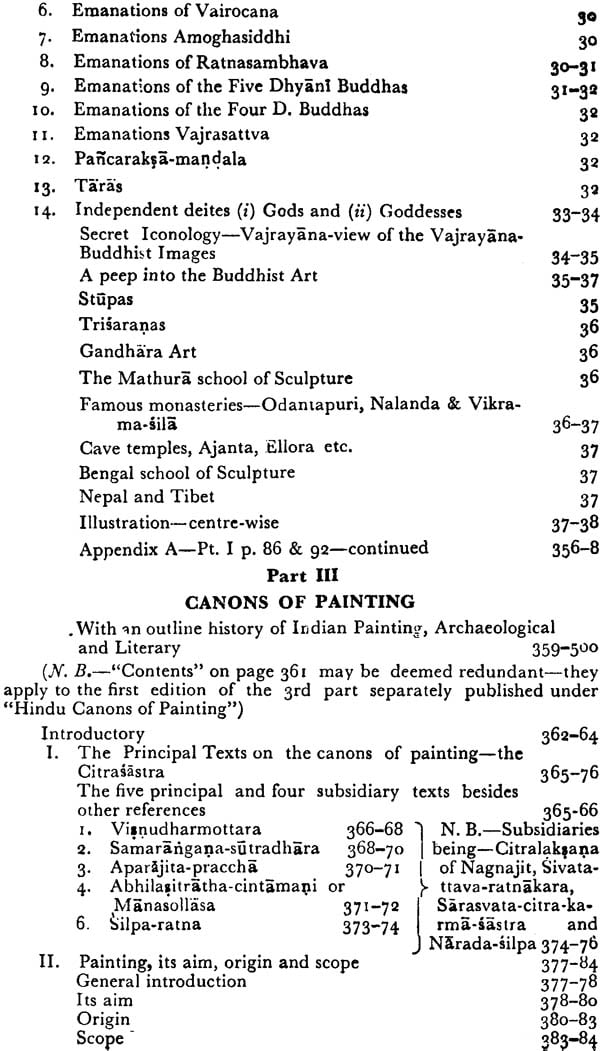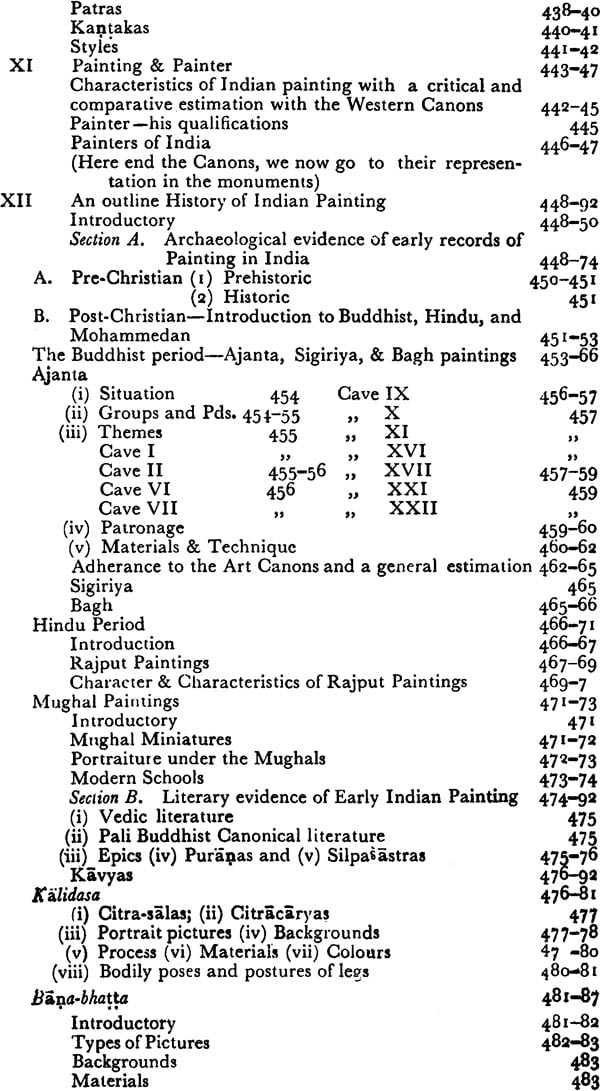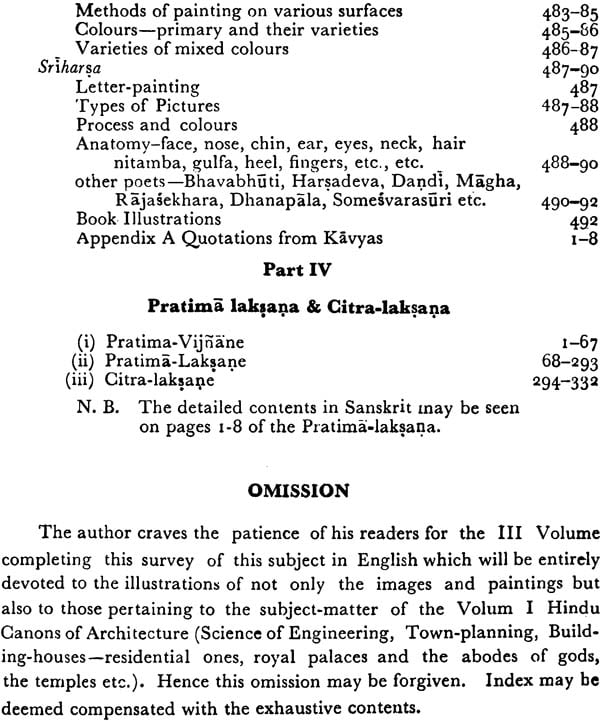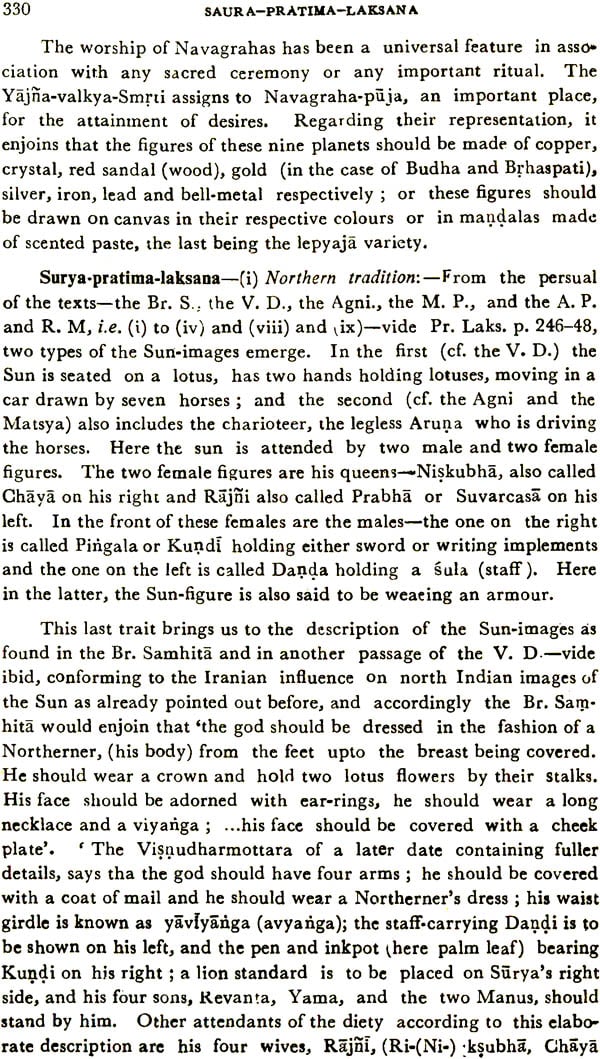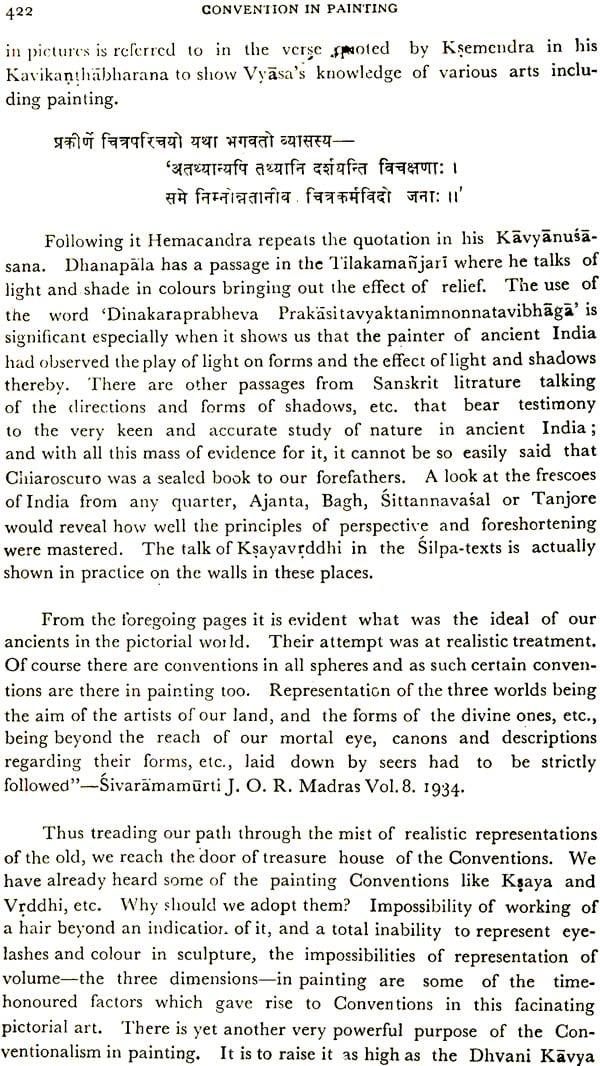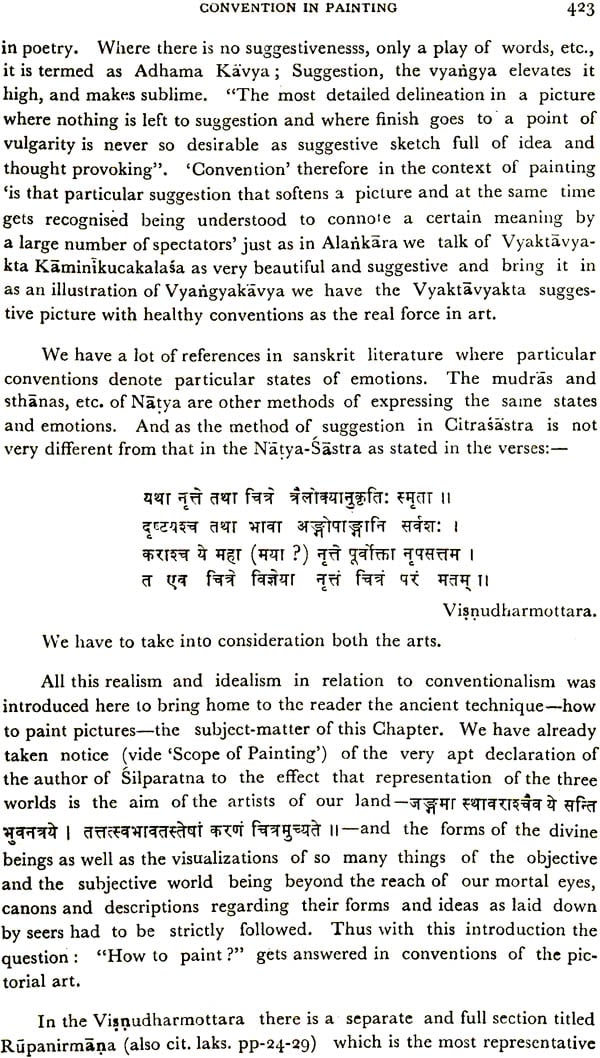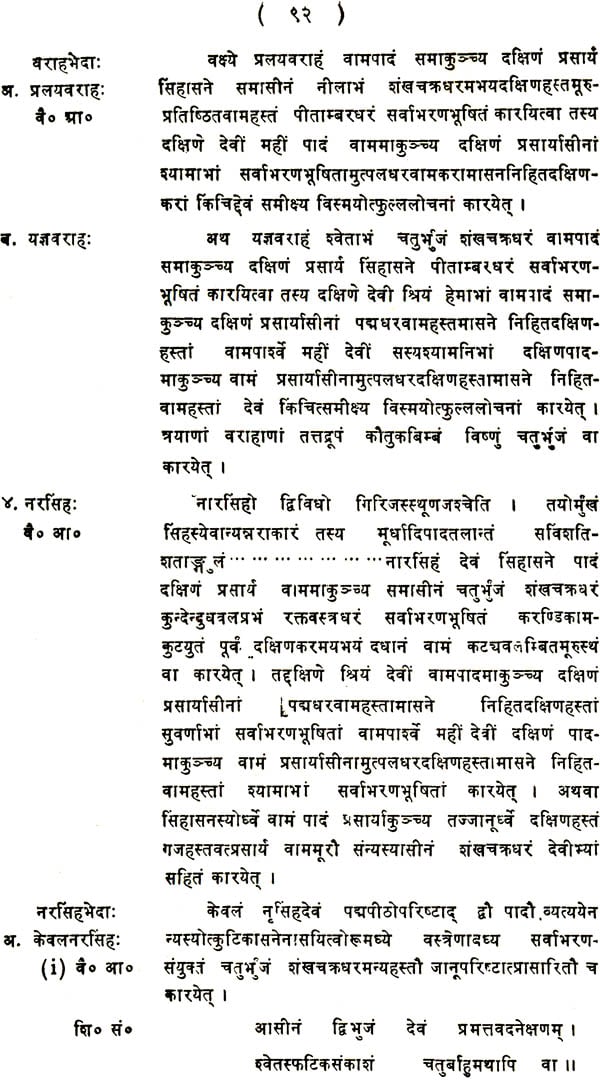Vastu Sastra (Vol - II: Hindu Canons of Iconography and Painting)
Book Specification
| Item Code: | IDF743 |
| Author: | D. N. Shukla |
| Publisher: | MUNSHIRAM MANOHARLAL PUBLISHERS PVT LTD |
| Language: | English |
| Edition: | 2019 |
| ISBN: | 8121506123 |
| Pages: | 824 |
| Cover: | Hardcover |
| Other Details | 9.7" X 6.8" |
| Weight | 1.35 kg |
Book Description
Foreword:
I deem it a privilege and also my duty to write a foreword for D. N. Shukla's book on Hindu Canons of Iconography and Painting which forms Vol. IX of the Bharatiya Vastu- sastra Series. Dr. Shukla himself planed out the series and he has already published five volumes of it. Of these as many as four are in Hindi, the fifth one on Hindu Canons of Painting being in English. This shows the bulk and magnitude of the work already done by him and he intends to follow it up by bringing out Volumes on Hindu Canons of Architecture, which will constitute the remainder of the series. It has been possible for this comparatively young scholar to do so much work of this highly technical character for he has combined in him a very intimate knowledge of Sanskrit with a first hand experience about the architectural, iconographic and pictorial remains of ancient and medieval India. This is a combination rarely to be found among scholars engaged in the pursuit of similar studies, and I am sure he will be able to throw much further light on this branch of Indology. I have long been acquainted with the progress of his work and I can say without any hesitation that he has all along been sincere and conscientious in his scholarly researches. His treatment of the carious topics connected with his subject has always been critical and his appraisal of the views of previous writers has been fair and just. I have no doubt that the Government of the Uttar Pradesh and the Government of the Indian Union will extend to him their full patronage in the matter of the publication of his further researches.
It should be emphasized in this connection that he is not only advancing the bounds of our knowledge in this fascinating branch of Indology but he is also enriching the technical side of Hindi literature by writing many of these books in the Rashtrabhasha.
In fine I can only observe that the present work on the Hindu Canons of Iconography and Painting is one of considerable merit and I am sure it will receive attention and appreciation from the world of scholars which it so thoroughly deserves.
This work-Vastusastra Vols. I & II –Vol. II being published first, originally conceived as one of the series of a ten-to-fourteen-volume- project, under the general caption ‘Bharatiya Vastusastra' instituted by me some years back, can now be said, a complete English version of my D.Litt. Thesis-"Foundations and Canons of Hindu Iconography (both sculptural and pictorial)"-the two parts i. e. Canons of Icono- graphy (I) and Canons of Painting (III) wherein could also be sub- mitted, along with my already published works -.Pratima-vijnana, Pratima-laksana and Citra-laksana.
The author, primarily a student of Vastu-sastra, when got enchanted with this fascinating lore of Silpa-sastra, has to say a word on the wide scope of Vastu-sastra where Silpa-sastra, the science of sculpture, and the canons of painting (the Citra-sastra) are also included in its broader purview.
The English word 'architecture' does not and cannot denote and connote fully the Indian word 'Vastu' (s'astra or kala). In India the Science of Architecture-the Vastu-sastra has at least five main branches: the Canons of Town-planning; the Art of House-building (both secular and religious-secular being the residential houses of middle class people (House-architecture) as well as the palaces of kings (Palace- architecture) and religious being the abodes of gods-the temples- (Temple-architecture); the Canon of icon-making-Iconography (and also the art of sculpture, the rich heritage of India); the essential characteristics of Painting-e-Citra-Iaksaua and the art of the construc- tion of the machines (mechanical devices) as well as the articles of furniture etc.
Fortunately this full-fledged scope of architecture is fully represented in the pages of the Samarangana-Sutradhara of King Bhojadeva of Dhara, one of the greatest literary luminaries of India and the greatest patron of Art and Literature. The writer, a student of this magnificent book with the magllificant title, written by a magnificent king, while working for his Ph D. Thesis-" A study of Bhoja's Samar anga na- Sutradhara, a treatise on the science of Architecture", naturally conceived the idea of pursuing this subject further up and this has resulted in brining out about five Volumes-s-Bharatiya Vastu-sastra (Vastu-vidya evam Puranivesa ) dealing with a succinct outline history of Vastu-vidy a and the ancient town-planning-both the rise and growth of the different and manifold types of towns and the Canons of Town-planning; the Prasada-vastu (only one part is so far printed under the title 'Hindu Prasada ki caturmukhi Prsthabhumi) and the three volumes already mentioned above-Pratima-vijnana, Pratima- laksana and Citra-lak ana.
The very high opinion of the renowned indologists like Dr. J. N. Banerjea, Carmichael Professor of Ancient Indian History and Culture, Calcutta University, and Dr. V. S. Agarwal, Professor of Art and Architecture in the University of Varanasi, and the felicitations received from so many other quarters as well as the patronage from the Uttara Pradesha Government aud the University Grants Commission in the shape of subsidies and grant for publication of these researches, have also encouraged me a great deal to go ahead in my humble pursuit to make an attempt to open up a little fringe of that vast vista of vision-the India's past.
Now when the Volume on Iconography, the 'Pratima-Vijnana’ came out, it attracted the notice of that silent savant, the renowed Buddhist and Pali scholar, Professor C. D. Chatterjea, Head of the Department of Ancient Indian History & Archaeology, Lucknow Univer- sity, who liked this work very much, especially the angle of the treatment and he suggested I should now work on 'An anthology of Pratimala- ksanas' making an advancement on Sri Rao's work. I took his advice to my heart and dedicated myself with heart and soul and added another volume to the subject. Later on a third volume, ‘An anthology of Citralaksana' was also added and thus all these may be said to fittingly comprise the full subject of Indian Iconography.
Thus my iconographical studies comprised of the three volumes-
1. Pratima-vijnana.
2. Pratima-laksana and
3.Citra-laksana-constitute the four main pillars, on which the grand edifice of Hindu Iconography stands, These are the Background of Indian Iconography-the Institution of Worship (vide the Ist part, the 'Purva-pithika' of the ‘Pratitna-Vijnana’ in full ten chapters and 169 pages); the Canons of Iconography (vide the 2nd part, the 'Uttarapithika' of 'Pratima-Vijnana, the last seven chapters as well as the first Khanda of Pratima-Iaksana) ; the essential charac- teristics of Indian icons (Brahmana, Baudha and Jain-the exposition of which having been made briefly in the body of the Uttaraplrhika (Chapters 8-10) are fully and exhaustively shown corroborated from the original sources of Puranas, Agamas, Silpa-texts and other miscellaneous digests and anthologies (cf. the 'Sources of Hindu Icono- graphy'-the 2nd Chapter 'Pratima-Vijnana'-Uttarapithika) and gathered together in one volume (vide 'Pratima-Iaksana, II Khanda of eight patalas i. e. the parts) and lastly the Canons of Painting, the 'Citralak ana', forming an essential part of Hindu Iconography (the Citraja images being very highly extolled in the religious digests like Haribhakti-vilasa of Gopalabhatta).
Happily my Ph. D. Thesis, on account of its high merit (a pioneer work and the contributions which I could make there being regarded as so high that the award of Ph. D. Degree was the least credit for such a scientific and conscientious labour) was singled out by the University of Lucknow for seeking a substantial grant from the University Grants Commission, for its publication in an extended investigation. This gave me an added impetus to take considerable. pains to make a fuller survey in such a manner of this subject as to evolve out a compre- hensive work dealing practically with all the main branches of Hindu Iconography as already pointed out below; hence the emergence of this book.
This is, in short, the history of this work. Now let me come to the exposition of the subject-matter and contributions which I have been able to make in this very important and difficult branch of ancient Indian iore,
The subject of Indian Icon graphy is one of the most fascinating branches of Indology. It is not a pure art, it is applied theology, religion and philosophy, all ernbeded in one. Iconography, the science of image-making, forms one of the principal topics of Hindu science of the Vastu-Architecture (cf. writer's Hindu Science of Architecture- the scope and the subject-matter of architecture) and the religious origin of Indian Architecture is well known. Naturally, therefore, Indian Iconography, unless studied in its background of the religious beliefs of the people; its treatment is only half done. It is from this broad cultural stand-point that the writer has devoted as many as ten chapters, a Dasadhyayi, to the exposition of this background-the Institution of Worship.
Again Iconography in India is not an end itself, it is only an aid by means of which the spritual life, the religious craving and the pious dedications of the multitude of men in India were ennobled, satisfied and completed. Art for Art's sake may be a good dictum only so far as it aims at the development of the Art. The art when divested from the life in its spiritual inspiration and religious aspirations, becomes a dead art. The so called sensibility, the aestheticty or emotionalism as aroused by the creations of art, unless they aim at something higher and something nobler, are too not things of cultivation from Hindu view of life. It is from this fundamental background that studies on Indian Art-iconography, sculpture, architecture and painting should be taken up. After all, all these arts and sciences, thoughts and beliefs are only the different pillars, on which the great bridge of Hindu Culture has been built under which the sublime and divine current of life is flowing from the times immemorial. This current; though disturbed, is still flowing and the bridge of Hindu culure shows no sign of decline.
we know that the religious life of Hindus has had many trans- formations. The key-note of this religious life in India has been the quest of the object beyond this perceptible world. The life Divine, has always captured the life worldly. In the Rgvedic times the centre of the quest was manifold objects of natural phenomena, conceived as gods and goddesses, having their threefold divisions, those belonging to earth, midair and the sky. The cult of prayer (singing hymns of the Rgveda) was the first attempt to win over these divinities. Later on, the cult of sacrifice was in vogue (cf. Yajus- Samhita, Brahmanas and Kalpa-sutras). Still later, the paraphernalia of sacrifice, the complicated ritual requiring manifold articies and involving a good deal of expenditure, both monetary and temporal, could not last long. Hence centre shifted from the extrenal quest to the Internal Atman. This is what we learn from the Aranyakas and Upanisads.
In the Sutra period, however, the problem was how to reconcile both these ancient institutions of sacrifice and meditation as arose and developed in the Brahmanas and Upanisads. An orientation, therefore was felt necessary, to co-ordinate both the elements and the result was. the rise or the Puranas, Agamas, Tantras and the later systems of Indian philosophy and religion.
Despite a genuine effort on the part of the great thinkers of the past, however, a want was there. Both these institutions of complicated ritual and the philosophical or mystic meditation were not suited to the mass of huminity, the simple unsophisticated people, the ordmary run of men, forming the bulk of the population. Hence religious reform was undertaken and this could be accomplished only by a sage like Vyasa, the celebrated author of Puranas. The Puranas gave the popular religion of Bhakti, the germs of which had already been there in that fountain head of Vedic lore itself (cf. Svet. Up.).
Now with the dawn of the dovotional movements, the propagation of the image-worshiP as advocated by the Puranas and the Agamasaiming at the new orientation of the religious life of India after the sacrificial cult of the Vedas, a powerful impetus was provided for the erection of the temples and places of pilgrimage in every part of India giving rise to so many sacred places-s-dhams, mathas, tirthas and sacred shrines and temples all over India. Side by side this architectural upsurge, the corresponding and consequent necessity of the installation of the images of gods, more especially those of the two famous gods, Siva and Visnu, of the Hindu Trinity, was felt. Thus the origin and development of Architecture was synchronous with the origin and development of sculputre. It was with this background that almost all the treatises, all the manuals of architecture, both architectural like Visvakarma-Prakasa, Samarangana-Sutradhara, Aparajita-praccha, Mayamata, Manasara, Agastya.sakaladhikara, Silparatna and a host of others and non- Architecural like Puranas, Agamas, Tantras and Pratistha works, etc. have devoted a good many chapters on the treatment of sculpture also.
